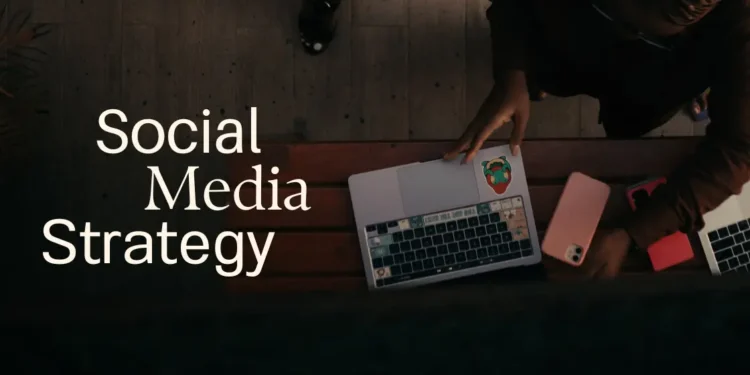Table of Contents
Introduction
What if I told you that a company once asked its customers not to buy their products—and still made more money? Sounds crazy, right? Well, that’s exactly what Patagonia did. In 2011, Patagonia ran a bold campaign called “Don’t Buy This Jacket” that went against everything we usually associate with advertising. Instead of pushing sales, they told people to buy less, think twice, and value sustainability. The result? Profits went up by 30%!
In this article on Syncblogs, we’ll dive deep into how Patagonia pulled this off, why their purpose-driven marketing worked, and what lessons businesses (and even consumers like us) can take away.
Background of Patagonia
Patagonia is not your average clothing company. Founded in 1973 by Yvon Chouinard, the brand quickly became known for its outdoor gear and clothing. But more importantly, Patagonia built its identity around environmental responsibility. Unlike fast fashion brands, Patagonia stood for durability, sustainability, and protecting the planet.
The Fashion Industry at the Time
Back in the early 2010s, fast fashion was booming. People were buying cheap clothes, wearing them a few times, and tossing them away. This led to massive waste, pollution, and exploitation in manufacturing. Most brands jumped on the fast-fashion train, but Patagonia decided to go the other way.
The Bold Campaign: Don’t Buy This Jacket
In 2011, on Black Friday—the biggest shopping day of the year—Patagonia ran a full-page ad in The New York Times. The headline read:
“Don’t Buy This Jacket.”
The ad featured their popular R2 jacket and listed out the environmental impact of making it, such as water consumption and carbon emissions. The message was clear: Don’t buy more than you need.
What Message Patagonia Wanted to Share
The purpose wasn’t to discourage people from buying forever. Instead, Patagonia wanted to remind customers:
- Buy only when necessary.
- Choose quality over quantity.
- Be mindful of the environmental cost behind every purchase.
It was less about sales and more about sparking awareness.
Why It Was a Risky Move
Think about it—what brand tells people not to buy their product? Most companies would fear losing revenue. Patagonia risked sounding anti-consumer or even arrogant. But because the company had already built a reputation for honesty and sustainability, the move resonated deeply with its audience.
Purpose-Driven Marketing Explained
Purpose-driven marketing is when a brand puts its values and mission above short-term profits. Instead of shouting “Buy now!”, Patagonia chose to share a bigger story—protecting the planet. This made their campaign relatable, emotional, and memorable.
How Patagonia’s Values Shaped the Campaign
Patagonia has always been about more than profits. Their mission statement is:
“We’re in business to save our home planet.”
That’s not just a slogan. It shows up in everything they do, from materials used to repair programs and activism. The “Don’t Buy This Jacket” ad wasn’t a gimmick—it was a natural extension of their long-standing values.
The Worn Wear Program
One of Patagonia’s coolest initiatives is the Worn Wear program. Customers can:
- Repair damaged clothing for free.
- Trade in old Patagonia clothes for store credit.
- Buy second-hand items at discounted prices.
This isn’t something you’ll see at many other clothing companies.
Repair, Reuse, Recycle: Patagonia’s Commitment
Patagonia also trains customers on how to repair their clothes themselves. If you’re done with your jacket, you can return it. They’ll recycle it—or if it’s still good, resell it. It’s a full-circle approach to clothing.
The Surprising Results of the Campaign
Instead of hurting sales, the campaign boosted Patagonia’s profits by 30%. Why? Because people appreciated the honesty and responsibility. The campaign didn’t just sell jackets; it sold trust.
Why Customers Trusted Patagonia
Consumers are smart. They can tell when a brand is faking it. Patagonia proved its authenticity by backing up words with action. This built deep trust and loyalty—something money alone can’t buy.
Lessons Businesses Can Learn
Here are a few takeaways from Patagonia’s success:
- Be authentic: People connect with honesty.
- Stand for something: A strong mission attracts loyal customers.
- Think long-term: Sustainability pays off, even financially.
- Don’t fear risks: Sometimes going against the grain makes you stand out.
How Patagonia Differentiated from Fast Fashion
While other brands encouraged overconsumption, Patagonia became the voice of reason. In a world addicted to fast fashion, Patagonia offered slow, sustainable, and responsible choices. That’s how they stood out in a crowded industry.
Why Storytelling Mattered More than Selling
Patagonia didn’t just advertise a product; they told a story about the planet, responsibility, and values. That story is what people connected with. As the saying goes, “People don’t buy what you do, they buy why you do it.”
Conclusion: Patagonia’s Legacy in Marketing
The “Don’t Buy This Jacket” campaign wasn’t just an ad—it was a statement that changed the way people looked at fashion and consumerism. Patagonia showed that when a company stays true to its purpose, customers respond with loyalty and respect. And yes, profits too.
Patagonia’s success proves that sometimes, less really is more. If you want to boost traffic via AI then read the blog “Perplexity SEO: The New Way to Boost Traffic“
FAQs
1. What was Patagonia’s “Don’t Buy This Jacket” campaign?
It was a 2011 ad campaign where Patagonia encouraged customers to buy less and think about the environmental impact of their purchases.
2. Why did Patagonia tell customers not to buy?
They wanted to raise awareness about overconsumption and promote sustainability, not chase quick profits.
3. Did Patagonia actually lose money from this campaign?
No! Surprisingly, their profits increased by 30% because customers trusted their authenticity.
4. What is Patagonia’s Worn Wear program?
It’s an initiative where customers can repair, recycle, or trade in old Patagonia products for store credit.
5. Where is Patagonia from and what does it sell?
Patagonia is an American company founded in 1973 in California. It sells outdoor clothing and gear, including jackets, fleeces, backpacks, and accessories, all designed with durability and sustainability in mind.
6. What can other businesses learn from Patagonia’s strategy?
That putting purpose and values first can actually build stronger customer loyalty and boost profits in the long run.















